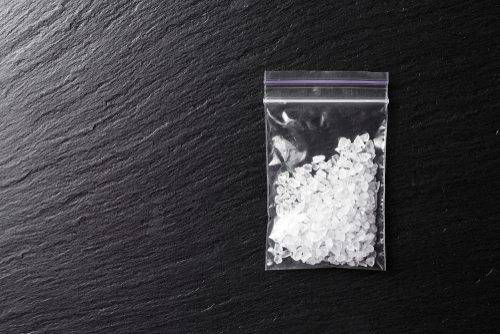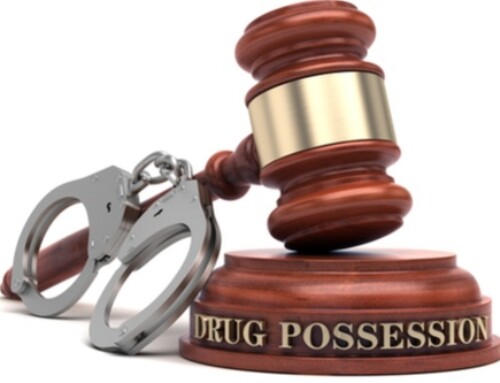As a criminal defense attorney in North Charleston, SC, I have seen lives ruined by methamphetamine (meth). Use, possession and sale of meth can send you to prison and you will go through life with a felony charge. In this article, I will define meth, discuss the penalties, possession of paraphernalia and the difference between cocaine and methamphetamine.
What is Methamphetamine?
Methamphetamine is a white crystalline drug that people take by snorting, smoking or injecting it. Some even take it orally, but all develop a strong desire to continue using it because the drug creates a false sense of happiness and well-being—a rush of confidence, hyperactiveness, and energy and some also experiences a decreased appetite. The effects of meth usually last from 6 to 8 hours but can last up to 24 hours. The first experience might involve some pleasure, but from the start, meth begins to destroy the user’s life.
Meth is used by individuals of all ages but is most commonly used as a “club drug,” taken while partying in nightclubs or at rave parties. Its most common street names are ice or glass. Meth is a dangerous and potent chemical and, as with all drugs, a poison that first acts as a stimulant but then begins to systematically destroy the body. Thus, it is associated with serious health conditions, including memory loss, aggression, psychotic behavior and potential heart and brain damage. Highly addictive, meth burns up the body’s resources, creating a devastating dependence that can only be relieved by taking more of the drug. Meth’s effect is highly concentrated, and many users report getting becoming addicted from the first time they use it.
Making meth is a dangerous process. The chemicals are quite volatile, and when mixed they create fumes that permeate everything they touch, including walls, furniture, clothing, and plumbing. The residue remains long after the product has departed, and its clean-up is long and arduous. Many landowners, discovering to their dismay that their properties have been used to make meth, skip the cleaning and simply tear-down the structures. They take this drastic step because even a thorough cleaning may not rid the structure of the taint and because state disclosure laws relating to renting and selling property force sellers or landlords to disclose the building’s meth-lab history. After disclosure, the landlords and sellers of cleaned-up labs often find that they have unmarketable properties on their hands.
What are the Penalties for Meth in South Carolina?
It is important to understand that you could be charged for various reasons where meth is concerned. Your charges may depend on factors like your intentions – were you going to sell it, use it, or were you just caught in a place where meth happened to be. Other factors include how much meth you had in your possession, how much meth was present in the area, if you had the ingredients for meth in your possession, your criminal history, and/or how many times you have been convicted of a drug offense.
(A) A person possessing less than one gram of methamphetamine or cocaine base, as defined in Section 44-53-110, is guilty of a misdemeanor and, upon convictionfor a first offense, must be imprisoned not more than three years or fined not more than five thousand dollars, or both. For a first offense the court, upon approval of the solicitor, may require as part of a sentence, that the offender enter and successfully complete a drug treatment and rehabilitation program. For a second offense, the offender is guilty of a felony and, upon conviction, must be imprisoned not more than five years or fined not more than seven thousand five hundred dollars, or both. For a third or subsequent offense, the offender is guilty of a felony and, upon conviction, must be imprisoned not more than ten years or fined not more than twelve thousand five hundred dollars, or both. Notwithstanding any other provision of law, a person convicted and sentenced pursuant to this subsection may have the sentence suspended and probationgranted and is eligible for parole, supervised furlough, community supervision, work release, work credits, education credits, and good conduct credits.
(B) A person who manufactures, distributes, dispenses, delivers, purchases, or otherwise aids, abets, attempts, or conspires to manufacture, distribute, dispense, deliver, or purchase, or possesses with intent to distribute, dispense, or deliver methamphetamine or cocaine base, in violation of the provisions of Section 44-53-370, is guilty of a felony and, upon conviction.
Possessing meth for sale is a more serious crime that possession for personal use. Accordingly, it carries greater punishments. Prosecutors base their cases on the amount of meth the defendant possessed. Large quantities obviously indicate an intent not to simply use, but to sell. When prosecutors are faced with close cases, they focus on other aspects of the case that indicate commercial activity rather than personal use, such as regular contact with buyers.
Is Possessing Paraphernalia a Felony in South Carolina?
No. Possession of drug paraphernalia is a misdemeanor in South Carolina and is a separate charge than a drug charge. Drug paraphernalia is a term that includes any item that can be used in connection with illegal drugs. Drug paraphernalia can be divided into two main categories: those used to distribute drugs and those used to ingest drugs. This distinction can be important for someone who is facing drug paraphernalia charges, especially since things like ordinary household items such as scales or spoons can be also used in the distribution or consumption of illegal drugs.
According to federal law, one of the ways that a law enforcement officer can determine whether a given item is considered drug paraphernalia is the context of that item’s use in the community. Therefore, someone facing drug paraphernalia charges could have a defense that he or she had the authorization to possess the item depending on why law enforcement believes the item to be illegal.
Examples of paraphernalia include:
-
Pipes made of glass, wood, stone, plastic, or ceramic
-
Water pipes, bongs, and chillums (a long hollow pipe usually made of clay)
-
Roach clips (objects used to hold burning materials like rolled cigarettes or joints that are too small to be held by hand)
-
Miniature spoons that hold less than one-tenth of a cubic centimeter, often used for snorting cocaine
-
Freebase cocaine kits or paraphernalia used to smoke cocaine
- Scales and balances intended to weigh controlled substances
- Equipment designed to test the strength or purity of controlled substances
- Materials or chemicals used to “cut” or dilute the strength of narcotics
- Plastic bags or balloons used to package small amounts of a drug
- Syringes or needles for injecting controlled substances
What is the Difference Between Cocaine and Meth in South Carolina?
Cocaine and meth are a lot alike while being completely different. The high is similar, cocaine is much stronger initially, but it does not last very long. People using cocaine need to use more cocaine constantly to maintain the high. Meth will take you almost to the same high as cocaine, but meth holds you at that high for 16 hours without needing more.
Cocaine is a numbing agent, it will cause you to not be able to feel tactile sensations. A person who is really high on cocaine can handle pain well because he is numb to it in some ways. A person on meth will feel all the sensations as though he was not on meth. Meth makes you ignore your pain but you will be aware of it.
Being convicted of a meth-related crime not only carried with it prison and fines, your reputation will be destroyed and the job market may turn its back on you. If you have been charged with a meth-related crime, call the Deaton Law Firm. I have the experience to develop a winning strategy.






